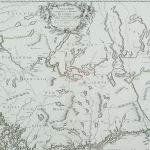The Great Northern War (1700-1721) was a major conflict that reshaped the power dynamics of Northern Europe, pitting the Swedish Empire against a coalition of Russia, Denmark-Norway, and Poland-Lithuania. For Finland, which was part of the Swedish Empire, the war marked one of the most challenging and destructive periods in its history. Finnish territories endured invasions, occupations, and significant suffering during what became known as the “Great Wrath” (Isoviha). For those studying for the Finnish citizenship test, understanding the Great Northern War’s impact on Finland offers insight into the resilience of Finnish society and the geopolitical shifts that affected the region.
Causes of the Great Northern War
The Great Northern War began in 1700 when a coalition led by Tsar Peter I of Russia sought to challenge the dominance of the Swedish Empire in Northern Europe. At the time, Sweden controlled significant territories around the Baltic Sea, including Finland, Estonia, Latvia, and parts of modern-day Germany and Poland. The war coalition, which included Russia, Denmark-Norway, and Saxony-Poland, aimed to break Sweden’s control over these regions and expand their own influence.
Russia’s primary goal was to secure access to the Baltic Sea, as Peter the Great sought to modernize Russia and establish it as a major European power. For Denmark-Norway, the war offered an opportunity to reclaim territories lost to Sweden, while Poland-Lithuania aimed to challenge Sweden’s political influence.
The Course of the War and Finland’s Role
The Great Northern War spanned more than two decades, with battles fought across Northern and Eastern Europe. Finland, as part of the Swedish Empire, was directly affected by the conflict, enduring invasions and occupations that left lasting scars on the Finnish people.
- Sweden’s Initial Successes and Finland’s Defense: At the start of the war, Swedish King Charles XII achieved several military victories, defending Swedish territories and pushing back the coalition forces. Finnish soldiers played a key role in the Swedish army, supporting campaigns in Poland, Russia, and other regions. However, as the war progressed, Sweden’s resources became stretched, weakening its ability to defend all of its territories.
- The Turning Point – Battle of Poltava (1709): The Battle of Poltava in 1709 marked a turning point in the war. Russian forces, led by Peter the Great, defeated the Swedish army in Ukraine, shifting the balance of power in favor of Russia. The loss weakened Sweden’s military position, and Charles XII’s forces were forced to retreat. Following Poltava, Russia gained momentum, advancing toward Swedish territories, including Finland.
- Russian Invasion and the “Great Wrath” (Isoviha): In 1713, Russian forces launched a full-scale invasion of Finland, beginning a period of occupation and hardship known as the “Great Wrath.” Russian troops occupied Finnish territories, devastating towns and villages. The occupation led to widespread suffering, as Russian forces looted resources, disrupted trade, and forced many Finns to flee or endure harsh living conditions. The Great Wrath left deep scars on Finnish society, with families displaced and communities struggling to survive under foreign control.
- Finnish Resistance and Guerilla Warfare: Although outnumbered, Finnish soldiers and local populations engaged in resistance efforts, employing guerrilla tactics against Russian forces. Known as sissit (guerrillas), these fighters targeted Russian soldiers, supply lines, and outposts. Finnish resistance, while unable to fully repel the occupation, demonstrated the resilience and determination of the Finnish people in the face of foreign domination.
The Treaty of Nystad (1721) and Territorial Changes
The Great Northern War concluded with the Treaty of Nystad in 1721, a peace agreement signed between Sweden and Russia. Under the treaty, Sweden ceded significant territories to Russia, including parts of Estonia, Livonia, and Karelia. Although Finland remained part of the Swedish Empire, the war had a lasting impact on the region, particularly in terms of territorial boundaries and security.
- Loss of Karelia: As part of the Treaty of Nystad, Sweden ceded the southeastern part of Karelia to Russia. This territorial loss affected Finnish lands, as southeastern Finland became part of the Russian Empire. The border shifts introduced new security concerns for Finland, as the region now bordered Russian-controlled territory, increasing its vulnerability to future conflicts.
- End of Swedish Dominance in Northern Europe: The Treaty of Nystad marked the end of Sweden’s status as a dominant power in Northern Europe. Russia emerged as the primary power in the region, with access to the Baltic Sea, establishing the city of Saint Petersburg as its new capital. This shift reduced Sweden’s influence in Finland and made the region more susceptible to Russian expansion in the coming centuries.
- Impact on Finnish Society and Economy: The war and subsequent occupation had lasting effects on Finland’s society and economy. Villages and farms were destroyed, disrupting agriculture and leaving many Finns impoverished. The loss of population, displacement, and economic hardships forced Finnish communities to rebuild in the aftermath of the war, fostering a sense of resilience and self-reliance.
Long-lasting Effects of the Great Northern War on Finland
The Great Northern War and the experience of the Great Wrath left a lasting legacy in Finland, shaping Finnish identity, cultural memory, and the region’s political landscape.
- Strengthening of Finnish National Identity: The hardships endured during the Russian occupation fostered a sense of unity and resilience among Finns. The resistance efforts, struggles, and shared suffering contributed to a growing sense of Finnish identity and a collective memory of perseverance. Stories of guerrilla fighters and the resilience of Finnish communities became part of Finland’s cultural heritage.
- Increased Vulnerability to Russian Influence: The territorial losses and proximity to Russian-controlled Karelia made Finland more vulnerable to future conflicts with Russia. Over the following centuries, Russian expansionist ambitions would continue to affect Finland, culminating in later wars and territorial changes.
- Legacy of the Great Wrath in Finnish Memory: The period of the Great Wrath remains an essential part of Finnish historical consciousness. The widespread suffering, displacement, and destruction left deep scars on Finnish communities, fostering a cautious attitude toward foreign influence and a desire for self-determination. The experiences of this period contributed to Finland’s emphasis on national security and sovereignty.
- Impact on Finnish Culture and Folklore: The events of the Great Northern War and the Great Wrath influenced Finnish folklore, literature, and cultural expressions. Stories of Finnish resistance fighters, displaced families, and the destruction of villages are preserved in Finnish oral traditions and literature, reflecting the collective memory of survival and resilience.
The Great Northern War’s Role in Finnish History
The Great Northern War was a turning point in Finnish history, marking the decline of Swedish dominance in the region and the beginning of increased Russian influence. The territorial losses, suffering during the Great Wrath, and the post-war recovery period had a profound impact on Finnish society, shaping values of resilience, self-reliance, and national pride. These experiences laid the groundwork for Finland’s later struggles for autonomy and independence.
For those studying for the Finnish citizenship test, understanding the impact of the Great Northern War provides insight into Finland’s historical challenges and the resilience of its people. The legacy of the war is a reminder of Finland’s ability to endure adversity and rebuild, qualities that remain central to Finnish identity.


